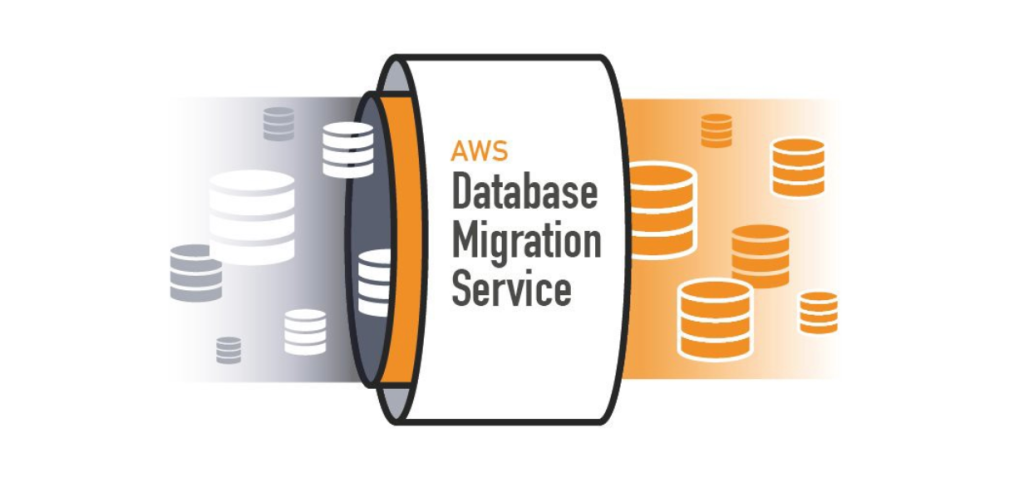Businesses Generate massive amounts of data nowadays. As companies grow, they often find themselves needing to migrate data to more efficient and scalable solutions. One such solution is the AWS Data Migration Service (DMS). This powerful service provided by AWS allows businesses to seamlessly migrate their data to the AWS platform. know here how to migrate data using AWS Data Migration Service, step by step, to ensure a smooth and successful data migration process.
Why Choose AWS Database Migration Service?

1. Seamless Migration
AWS DMS enables seamless migration from various sources to AWS, including on-premises databases, data warehouses, or other cloud platforms.
2. Minimal Downtime
By utilizing AWS DMS, businesses can significantly reduce downtime during the migration process, ensuring uninterrupted operations.
3. Scalability
AWS offers a highly scalable infrastructure, allowing businesses to easily scale their data migration needs as their requirements evolve.
4. Data Replication
AWS DMS provides real-time data replication, ensuring that the migrated data is always up to date.
5. Data Validation
With built-in validation features, AWS DMS ensures data integrity throughout the migration process, minimizing the risk of errors or data loss.
Now that we understand the benefits of AWS DMS, Explore the step-by-step process of migrating data using this powerful service.
How to Migrate Data Using AWS Data Migration Service?

Step 1: Preparing Your Source and Target Environments
Before you begin migrating your data using AWS DMS, it’s crucial to ensure that your source and target environments are properly configured. Here’s what you need to do:
- Source Environment Configuration: Set up the necessary permissions and connectivity for your source database. Ensure that you have the required credentials and network access to connect to the source database.
- Target Environment Configuration: Configure the target environment by setting up the appropriate permissions and network access. This will allow AWS DMS to connect to the target database.
Step 2: Creating a Replication Instance
To perform the actual data migration, you need to create a replication instance in AWS DMS. Follow these steps to create a replication instance:
- Access AWS Management Console: Log in to your AWS Management Console and navigate to the AWS DMS service.
- Create a Replication Instance: Click on the “Create replication instance” button and provide the necessary details, such as instance type, VPC, and availability zone.
- Configure Security Groups: Configure the security groups for your replication instance to control inbound and outbound traffic.
- Review and Launch: Review your settings and launch the replication instance.
Step 3: Setting Up a Replication Task
Now that you have a replication instance, it’s time to set up a replication task. A replication task defines the source and target databases, as well as the migration settings. Here’s how you can create a replication task:
- Navigate to Replication Tasks: In the AWS DMS console, click on “Create replication task” to access the task creation wizard.
- Provide Task Details: Enter a meaningful task name and description. Select your source and target database endpoints.
- Specify Migration Type: Choose the migration type based on your requirements. AWS DMS supports various migration scenarios, including homogeneous, heterogeneous, and database engine-specific migrations.
- Configure Task Settings: Configure additional settings, such as table mappings, data transformation, and error handling.
Start the Replication Task: Review your task configuration and start the replication task.
Step 4: Monitoring and Managing the Data Migration
Once the replication task is running, it’s essential to monitor its progress and manage any potential issues. AWS DMS provides comprehensive monitoring and management capabilities. Here’s what you can do:
- Monitor the Replication Task: Keep an eye on the task status, latency, and data validation results using the AWS DMS console.
- Troubleshoot Issues: If you encounter any issues during the migration process, consult the AWS DMS documentation and troubleshooting guides. AWS provides support services to assist you in resolving any migration-related problems.
- Data Validation and Cutover: Perform thorough data validation to ensure the integrity of the migrated data. Once you are confident in the migration results, plan and execute the cutover to switch to the new target environment.
FAQs
Yes, AWS DMS supports migrating data from on-premises databases to AWS. You need to set up the necessary connectivity and permissions to establish a connection between your on-premises database and AWS DMS.
Yes, AWS DMS provides real-time monitoring of the data migration process. You can track the status, latency, and data validation results using the AWS DMS console.
AWS DMS includes built-in data validation features to minimize the risk of errors or data loss. In case of any issues, you can consult the AWS DMS documentation or contact AWS support for assistance.
Yes, AWS DMS supports heterogeneous database migrations. You can migrate data between different database engines, such as Oracle, MySQL, SQL Server, and more.
Yes, AWS DMS allows data transformations during the migration process. You can apply various transformations, such as data filtering, column mapping, and data type conversion.
Yes, AWS DMS is designed to handle large-scale data migrations efficiently. It offers scalability and performance optimizations to ensure smooth data migrations, regardless of the data volume.
Conclusion
Migrating data is a critical process for businesses seeking to leverage the benefits of the AWS platform. AWS Data Migration Service simplifies and streamlines this process, allowing businesses to migrate their data seamlessly. By following, you can confidently migrate your data using AWS DMS while minimizing downtime and ensuring data integrity. Embrace the power of AWS Data Migration Service and unlock new possibilities for your business
































































